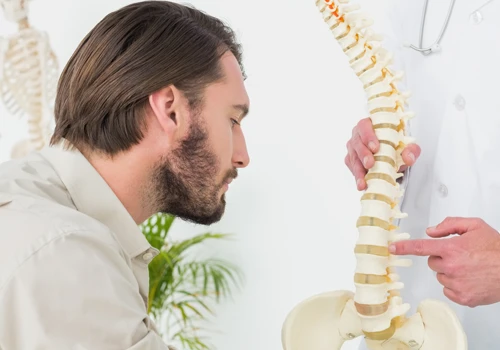Disc Bulge/Herniation and How it Can Be Treated in Council Bluffs IA
Disc Bulge/Herniation and how it can be treated in Council Bluffs IA
Many of us have had some form of low back pain in the past. Most of us can recall a specific motion or action that caused the pain, some just woke up with it. One issue that I see in my office all the time is a disc bulge or disc herniation in Council Bluffs IA. There is a difference between the two.
What's the Difference Between Disc Herniation and Bulge in Council Bluffs IA
A disc herniation is any disc tissue that goes beyond the limits of the disc. A disc bulge means damage at more than 50% of the circumference of the disc. Most common is the disc herniation which is usually a tear in the annular fibers of the disc which allows the disc material to protrude through the fibers. You can either have a protrusion or extrusion.
A protrusion is when the base of the herniation is wider than the distance of the material sticking out. Extrusion is when the material herniates out further than the width of the base. These injuries are common in patients with a history of low back pain or disc degeneration. They most often occur when the patient is performing a bending and twisting motion. The pain is pretty immediate and usually comes with some radiating leg pain.
Treatment for Herniation and Disc Bulge
So how do we treat this in our office? After a thorough history and getting some images of the spine, I use a technique called Flexion-Distraction. This creates negative pressure in the area of the disc herniation, helping to pull the material off the nerve which is causing the pain. This not only helps with pain but speeds along with the healing of the disc injury.
I also adjust the joints above and below the area of the herniation. I have found that one of the main causes of disc herniation is the lack of motion in the joints around that disc. When the spine moves through its range of motion, stress is put on the areas that don't move and on the discs in that area. If the joints aren't moving, something has to give and move which when adding the additional stress of twisting and bending, is the annual fibers of the disc causing the weak spot for the herniation to occur.
So adjusting the joints around the herniation not only allows for them to move properly, but it also takes the pressure off the nerves, relieving pain and allowing the body to heal more efficiently. Now healing a disc injury does take time. They have a poor blood supply which means it takes longer for them to heal. It won't happen overnight and the adjustment is not a one-hit-wonder.
In most cases, it relieves quite a bit of pain with only a few visits but is important to continue with care even after the pain has stopped. Keeping proper motion in the spine will help in preventing herniations from happening again. There are also instances where the herniation is so severe that more intervention is needed, especially when we see continuing numbness and loss of muscle strength in the legs. In these cases, a patient may need to be referred for surgery to address the disc injury.
Thankfully, I have not had to do this yet. If you have any questions about this issue or anything else, please call our office or message us on Facebook and we will answer them promptly. As always, have a Well-Adjusted Day!
New Patient
Special Offer
Complimentary Consultation



